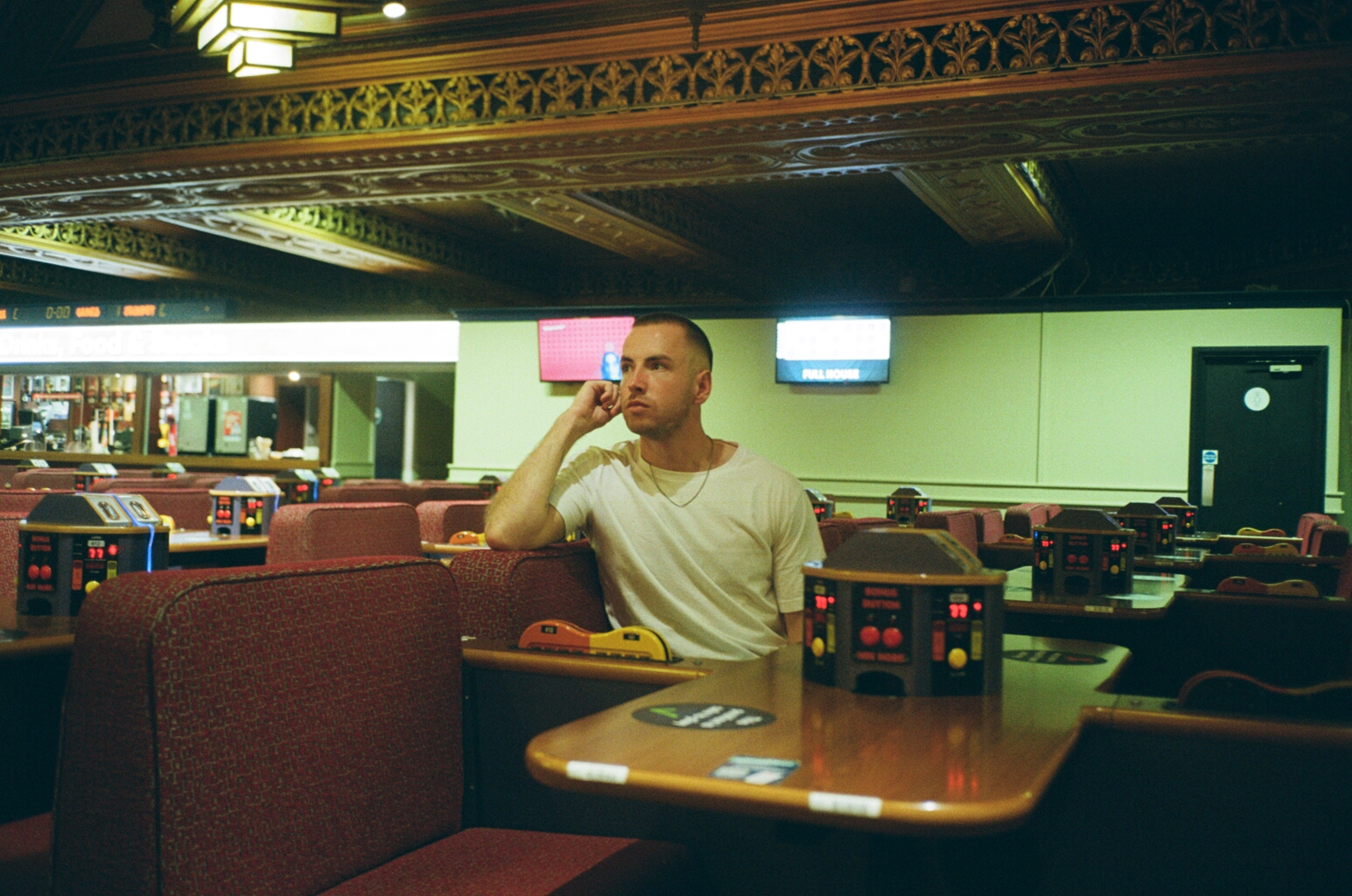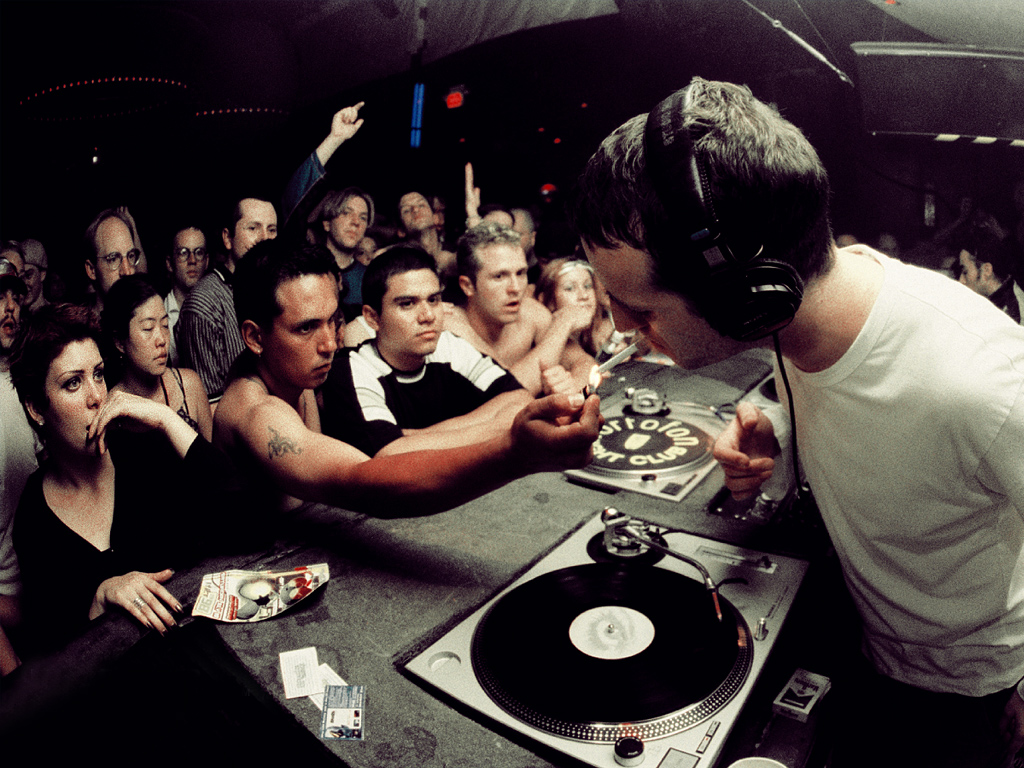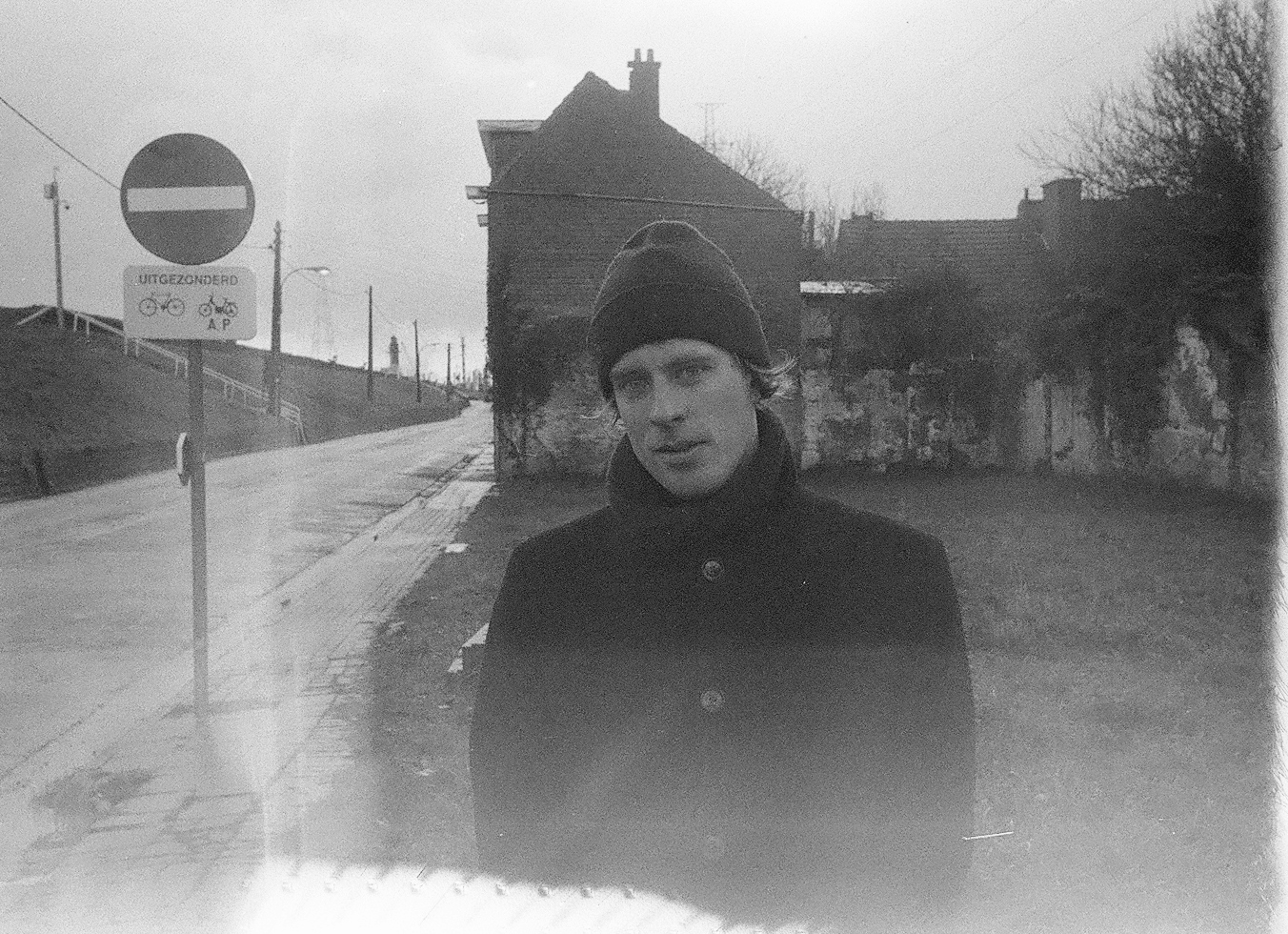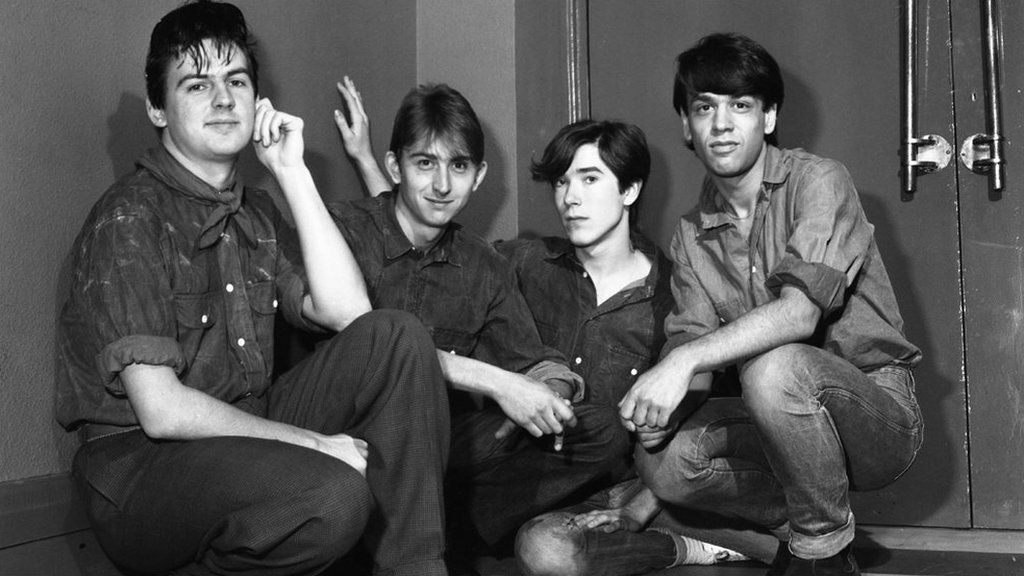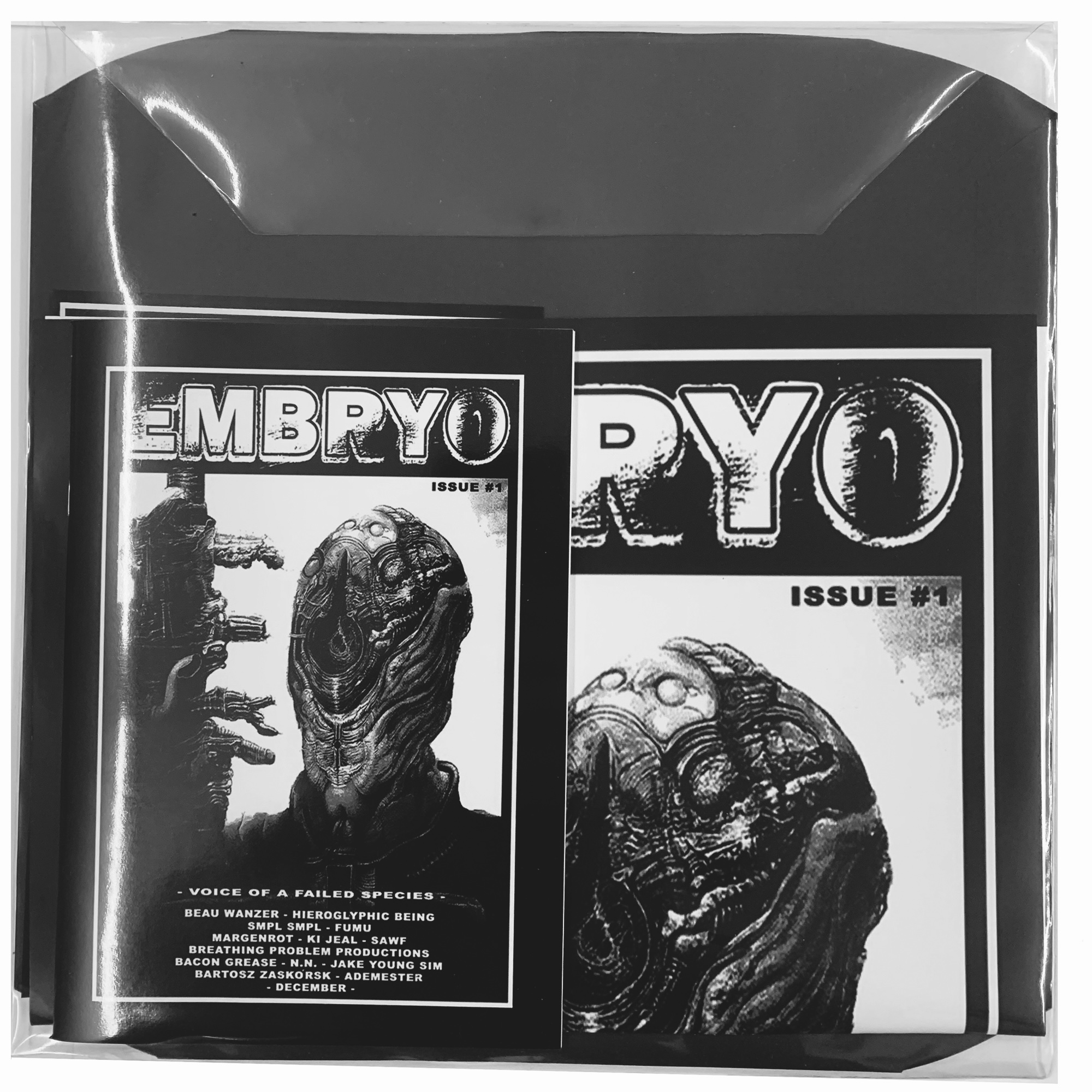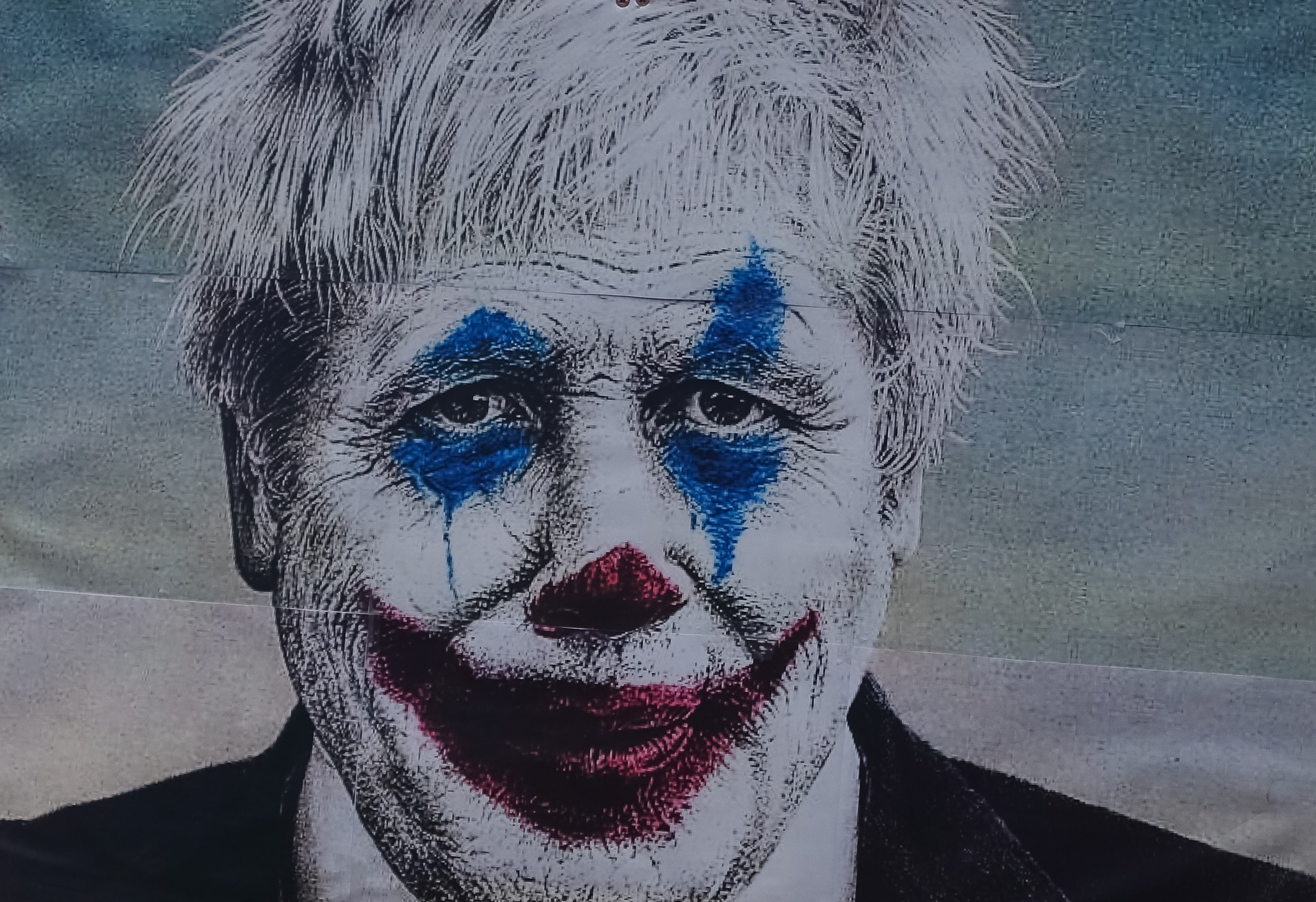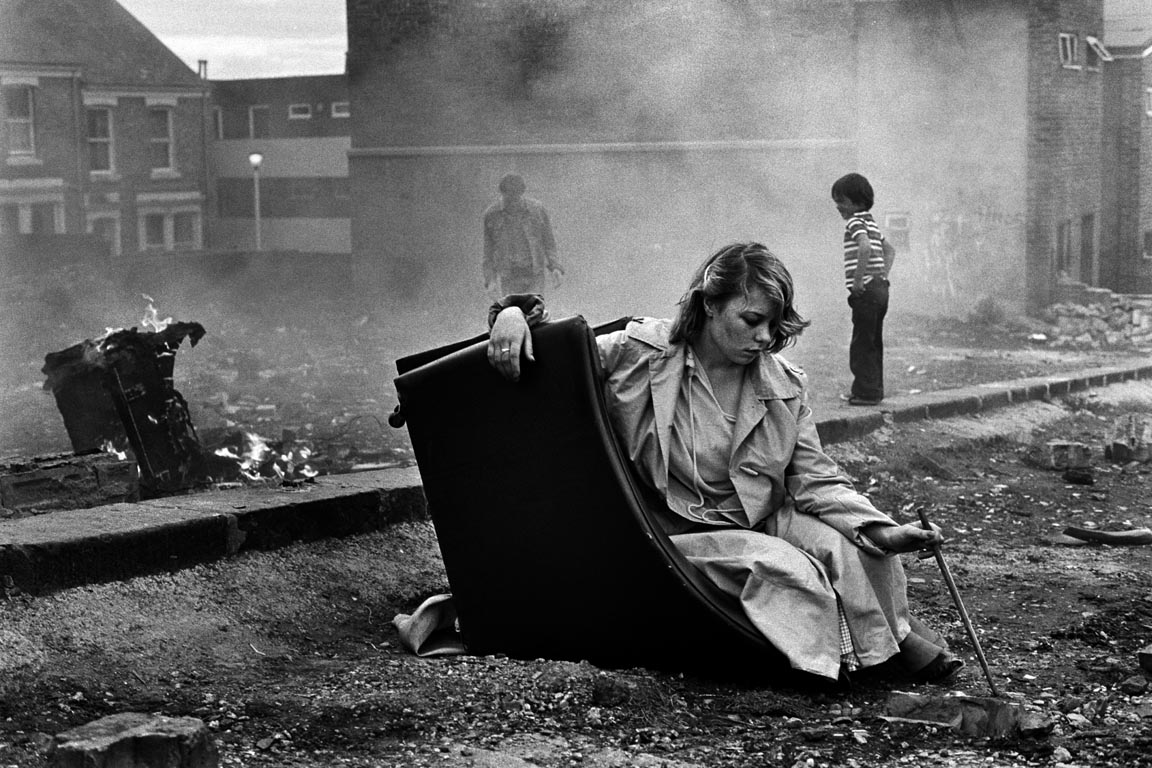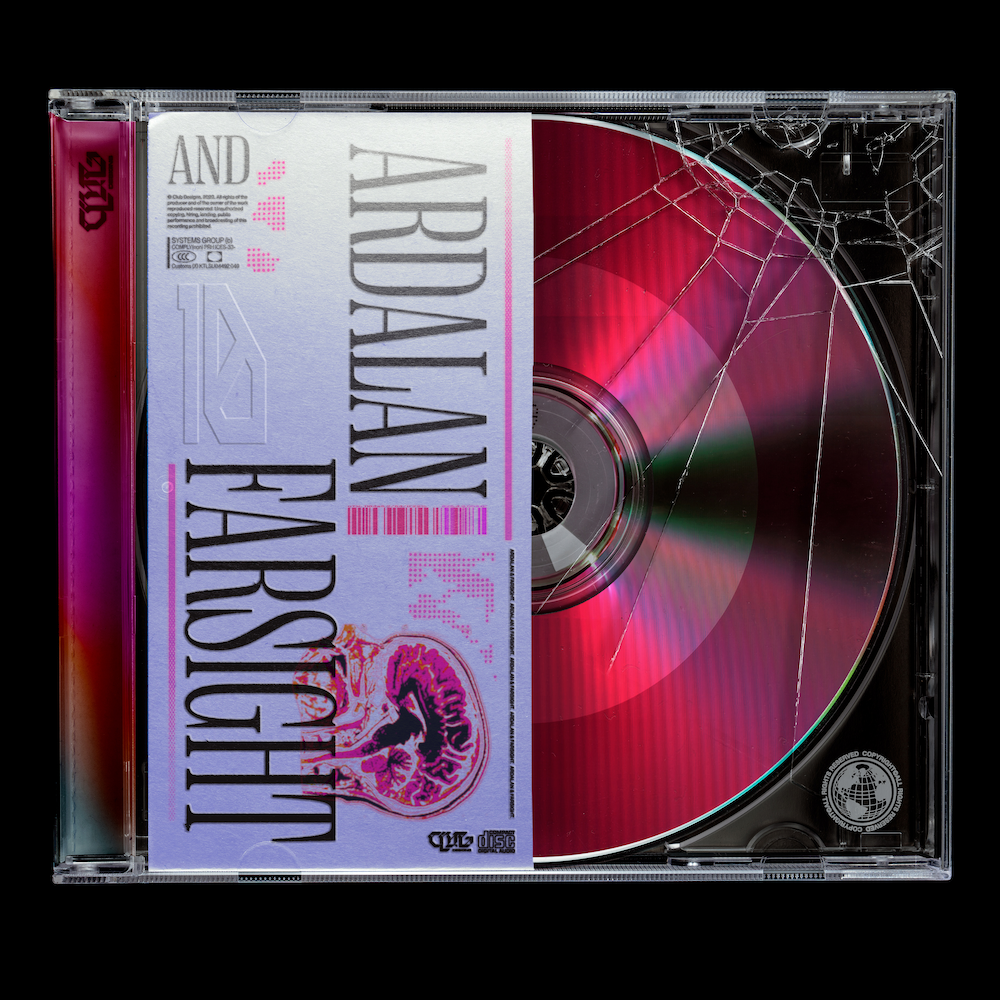Dub Abstraction, Astral Plane Pop & Interplanetary Lovers Rock: The Ludicrous Sound Of Naffi Sandwich & Brenda Ray

‘From the murky, clandestine shadows of Tamworth Street, Earlestown, came a new sound. It rose in the stillness of the dark air, and drifted ghost-like towards Market Street. Bemused passers-by breathed it in, the music revitalising their bodies like a breath of fresh air. Stray dogs pricked up their ears, and stealthy cats paused to take in the magical sound’
Earlestown is located in the North West of England, a small town on the border between Merseyside and Greater Manchester. It formed part of a significant passage on the Liverpool and Manchester steam railway line, the first of its kind, opened in 1830. Its convenient location ensured its relative importance into the early 20th century, deriving its industrial significance from a wagon works, a sugar works and a few select engineering enterprises, all of which have since seen either a reduction in operations or complete closure and relocation. It might be said that in a modern era, it’s something of a typical English town. Sleepy, docile, post-industrial, a few pubs, a run of the mill high street. In Newton-le-Willows, a larger town that comprises Earlestown and a few other areas, the local nightclub was formerly named after local ‘hero’ Rick Astley before being rechristened. A somehow depressing bit of trivia that seems less like a humdrum reality than something lifted out of an old Phoenix Nights script. Yet in 1979 the town incubated an altogether different sort of industry, from which emerged an altogether different kind of talent.
Naffi Sandwich were Paul Catchpole (aka Captain Catchpole, aka Bomber McBain), Gerry Kenny (aka Freddie Viaduct, aka Minister of Noise) and Brenda Kenny (aka Polly Rithim, aka Brenda and The Beachballs aka Brenda Ray) A group with humble means – a studio behind an old barbers shop – and an inauspicious locale in which to base themselves, Naffi Sandwich went on to receive coveted plaudits from John Peel, supported Julian Cope on a three night run in Liverpool and drew rare praise from Nico after she witnessed them play in Manchester during her early 80s tenure in the city. Yet despite the admirable patronage they received it’s the records they made in collaboration, and the material that Brenda Kenny went on to produce in a solo capacity that attest to their distinction, together revealing a discrete, beguiling and utterly bizarre body of work.
The Naffi Sandwich crew and its core vocalist Brenda Ray propagated an exuberant DIY pop primitivism that smirked and pulled strange faces as much as it contorted and disorientated itself into an ecstatic dazzle of dub abstraction. Post-Naffi Sandwich, Ray went on to produce one of the finest overlooked records in the continuum of English reggae, a marvel of winsome, screwy lovers rock harmonics and outlandish roots psychedelia. Reggae in the Key of Z.
Reissues of Naffi and Ray’s work have been played and celebrated by the likes of JD Twitch, Blackest Ever Black, Jazzanova and Test Pressing, and you can hear their playful messthetic flair in everything from the spontaneous high spirit pop deconstructions of Good Sad Happy Bad (nee Michachu & The Shapes) to the wyrd English soul of Bullion to the Balearic synth pop chanson of Antinote’s Syracuse. In their own time, Ray and co could be perceived as aligned with a breed of post-punk that made impulsive amusement, as much as avant ideas, a ruling imperative, the same imperative that informed the likes of The Homosexuals, Family Fodder, The Flying Lizards, the 49 Americans and Maximum Joy. Yet what distinguished Naffi and Brenda Ray was an ability to tap into a dub future as yet unrealised, one that was otherworldly but daft; an interplanetary music brimming with nonsense and absurdity.
Naffi Sandwich derived their name from the Navy, Army and Air Force Institutes (Naafi), an organisation that provides facilities and goods at special rates for the armed forces. A ‘Naafi Sandwich’ is a sandwich with no filling, just two slices of bread with margarine. The work they created together reflected the humour suggested by this branding. They tended to indulge in offbeat humour whilst at the same time striving for homespun expansiveness.

Muva Dubbas
Brenda Kenny (aka Brenda Ray) & Gerry Kenny (aka Sir Freddie Viadukt)
Their first official release came with Rum One, an introduction to their label Rum Records, named after the North England colloquialism for a bit of a ‘character’. It’s a fitting title for sounds so skewwhiff. On ‘Muva Dubba’, in a languid tape bleed mist provided by Catchpole’s melos echo unit, slow trails of bass heft amble their way onwards into unchartered territory, while on ‘Uranium Geranium’ Brenda Ray sets into a drum trance amongst sounds which evoke the unheard night cries and drowned echoes of a parallel tropical world. A self-published cassette which bore the doctored image of an armed forces drill sergeant on the cusp of an officiously enacted goose step, this was Naffi Sandwich at their most esoteric, swarming any semblance of lucidity with a low visibility fug. A first disclosure that found them caught between grainy DIY dub and recondite novelty exotica. Yet potential shone through the haze; a previously insular world at the outset of broader exposure.
The band’s first single followed in the same year on Manchester’s Absurd Records, a place where Naffi’s enshrouded dub mischief would be right at home. After all this was the label that had in the same year put out Gerry & The Holograms ‘The Emperors New Music’, a release that was infamously labelled a non-existent anti-record and hailed by Frank Zappa. In an audacious satirical swipe, the vinyl of the record was glued to the sleeve making any content unplayable. Whilst Naffi’s offering – entitled Slice One/Slice Two – remained a conventional if rarefied concern for the consumer, once the needle hit there was still a measure of subversive mirth in its upbeat wrongness. A juggernauting knackered rockabilly riff barrels along courtesy of Viadukt’s guitar work and Catchpole’s unrelenting turn as drummer whilst Ray adds gleeful honks of melodica. Like Dadaistic garage rock, it sounds like the uneasy equilibrium between The Residents and The Sonics, an (un)common ground where art prank mystification meets urgent, distressed rock & roll initiation. John Peel eventually played the single and divulged in the NME that Naffi cassettes regularly accompanied him on car journeys. He sent a note to Naffi urging them to ‘keep ‘em coming’. Fortunately, they acquiesced.
1980’s follow up, ‘Nervous Norman Rockin’ At The Naffi’, featured a similarly cartoonish artwork courtesy of John McCarthy. Unfortunately, its contents have yet to be disinterred from the obscurity of a single edition cassette release, however the dedications detailed within reveal one of the band’s key inspirations, namely Roger Eagle, an early DJ at Manchester’s Northern Soul stronghold the Twisted Wheel and the later owner of Liverpool’s influential basement club, Eric’s. As Ray explains in the liner notes of EM’s 2012 reissue compilation ‘D’Ya Hear Me! Naffi Years 1979 – 83’, Eagle’s eclectic knowledge and selections were an irresistibly diverse spectacle to behold, sets that Ray herself was fatefully exposed to during a residency she took part in as a member of the ‘funky latin jazz group’ Inside Out: ‘Roger had been to an Inside Out gig, and gave us a residency (’79) In between sets he was playing the rarest cuts on the planet – dub plates to rockabilly out takes. That was it, hooked!’. Based on what Rum One had outlaid and Slice One/Slice Two had roared into, it’s perhaps appropriate to surmise that Eric’s and the wider Liverpool scene fed significantly into Naffi’s soundworld, adding rarer grist to the mill.

‘A secret society releasing secret hits’
Naffi Productions Cassettes (Rum Records, 1979 – 1982)
On ‘Naffi 1-2-3’, their third release on Rum, the nature of Naffi’s connection with reggae was explicitly referenced and explored on the introductory track ‘Naffi Dread’. Natty dread was common in rastafarian parlance, especially in roots reggae records of the 70s; an indication of an ideal lifestyle symbolised by knotted dreadlocks. Here though, the nomenclature of roots reggae and the sonic dislocation of dub was transfigured into a shambling eccentricity, realised in the form of an impellent dubwise Link Wray instrumental. A fast-mo rumble of looming and ricocheting reverb that sounds like a bric-a-brac approximation of King Tubby, ‘Naffi Dread’ is a disorderly but ultimately endearing blur of scruffy, hallucinatory propulsion.
‘Naffi Sandwich was instant or not at all. With no rehearsals it was spontaneous, instant from laughter, chord changes composed in the moment in our child-like enthusiasm for the state of our well-being’ Gerry Kenny aka Freddie Viaduct
Yet appearances can be deceiving. Although Naffi were perhaps influenced and encouraged by their connection with respective scenes in Manchester and Liverpool, and their recordings indicated a certain inexpert exhilaration, they were no slouches, as if merely fumbling their way through improvisation and thickets of effects. As Ray elaborates further in another section of the ‘D’Ya Hear Me’ collection liner notes, there was some deliberation in their methods, and more to their intent than mere reggae imitation:
‘Reggae had become popular and although we loved Augustus Pablo, King Tubby, Joe Gibbs, Lee Perry, we didn’t want to play reggae, but wanted to dub-up stuff that was not reggae. Not only that, we were listening to avant-garde jazz from the US – Alice Coltrane, Archie Shepp, Asha Puthli (Ornette Coleman/Science Fiction), Bobby Hutcherson, Marion Brown, Moacir Santos (Carnival of Spirits), Pharoah Sanders, in addition to the sounds of doo-wop, rockabilly, and early rock and roll and the cosmic funk of Lonnie Liston Smith’. Viadukt expressed similar sentiments during the time of Naffi’s early days, citing broad minded compulsions as a vital creative instigation: ‘Naffi Sandwich is like being schizophrenic. We’re not interested in playing a narrow sound – it’s very experimental’
On the same cassette, ‘Naffi Take Away’ upheld a similar tendency for antic execution. Like an adventurous short form Raymond Scott oddity, a voice utters mock patois alongside an exuberant, sped up rocksteady foundation. Catchpole – who would often interlace Naffi’s recordings with all manner of treated sounds – provides strange interjections courtesy of a tin tray played with nylon brushes whilst Brenda Kenny adds twinkling Pixiphone asides and accompanies Viadukt’s witty advertorial buoyancy with an impression which sounds like she’s doing her best to impersonate Elmo from Sesame Street. ‘Slop It’, another cut from ‘Naffi 1-2-3’ recalled the more forbidding sounds of their debut recordings, groaning with industrial inflections as if representing a telepathic channelling of Earlestown’s past. However, ‘Naffi Take Away’ had pointed to a more overtly melodic and poppier direction, a transition which would arguably reach its dizziest heights with their second single, ‘D’Ya Hear Me’.
‘Most jams end up sounding like pure crap the day after, when the happy dust has settled. To me a lot of Naffi Sandwich feels like jams gone well. I love the clicky and sticky pop nature of it, thick jungle rhythm and bite – no compromise. Gnashings of fun.’ Bullion
Before this odd pop peak came ‘Another Rum-Un’ in 1980, Naffi’s fourth Rum release, a cassette featuring artwork emblazoned with mischievous, multi-coloured frogs. Coming across this in a shop without prior knowledge of its origins must have raised a few eyebrows. On ‘New Chinese Funk’, a hypnotic funk riff trades space with enigmatic chimes conjuring the orient reveries of Martin Denny, whereas ‘Yes, I’ll Take You Home’ unloads an uncanny dirge of deadbeat psych-noir fit for rumination on a slow walk home. ‘The Hutch’, the B-side on the 1981 7” ‘D’Ya Hear Me’ release was something of a bridge between these visions of skeletal exotic funk and noirish atmospherics, however it’s A-side was a discernible departure from everything that had come before.
‘I’ve seen you around the town, sometimes up and sometimes down/come here to me and you will find/I can give you peace of mind…’
‘D’Ya Hear Me’ was an enraptured, dreamland dispatch detailing a hankering desire for young love. Holding at arm’s length but still judiciously presaging the excessively saccharine indie pop of Bristol’s Sarah Records by a whole seven years, it mingles quaint ardency with the unexpected and unfamiliar. By Naffi’s standards, it’s lead guitar is fairly straightforward, a source of striated funk largely unencumbered by the addition of any dub derailment. Disarmingly simple too are Brenda Kenny’s front-and-centre vocals, expressing fawning infatuation. A delicate but forthcoming and slightly androgynous presence, they eventually give way to one of Kenny’s melodica solos. Alongside the soft paddle of drum machine percussion, the melodica’s free reign gives it an unusual edge, as if a zoned out Augustus Pablo were to guest on one of the Marine Girls pared back heartbreak hymns. It stands as one of Naffi’s best works, demonstrating their willingness to integrate crafted pop into madcap outernational art.

D’Ya Hear Me Single (Rum 5, 1981)
Their final Rum release followed in 1982. ‘Maybe It’s Because I’m Not A Londoner’ – bearing one of Naffi’s most striking covers – took the blitz spirit wartime anthem penned by Hubert Gregg, and reversed its sentiment with a dose of up north wit. The title track emphasized Naffi’s avant jazz influences with the inclusion of alto sax and cornet, both of them utilized as spluttering channels for sudden atonal expulsions. It was the last material to emerge on Naffi’s own imprint, yet their relocation to Liverpool’s ARK Records heralded their debut LP and the band’s crowning moment, a record that encapsulated all of the band’s variegated ideas and competing impulses.
PLAY AT HIGH VOLUME
‘Yum Yum Yum Yum Ya’ saw release the same year. With it came a misfit manifesto, in the form of ‘Krazee Music’, a track that saw Brenda and Gerry Kenny share vocal duties in a sportive extended chorus that seemed to outline what Naffi had been about all along:
‘Well if you need it baby this is what you gotta do/You gotta let the world know that you’re krazee too
Krazee/You got me krazee too/Have a krazee time, playing krazee music for you…’
Suffused with prolonged waves of reverb and delivered with an exaggerated, self-parodic poise, ‘Krazee Music’ takes on the sound of a forgotten cult anthem. Elsewhere, the bizarro pop of ‘D’Ya Hear Me’ saw further exploration on ‘Everyday Just Another Dream’ in easeful electro-exotica that shares some of what Antena conjured on their mini opus ‘Camino Del Sol’. Though the vision throughout remains indisputably singular. On ‘Take Me In Your Car’ for instance, Naffi situate characteristically off colour lo-fi funk alongside cajoling laments, emulating the warped triumphal charm of ‘D’Ya Hear Me’.
From their debut LP it’s reasonable to assume Naffi had progressed in a fairly direct fashion, retaining their stranger sonic aspects whilst attaining a semblance of pop immediacy. However, they weren’t above addressing problematic issues, even if it appeared their foundations were fundamentally rooted in spontaneity and levity. ‘Blues for Toxteth’ commemorated the 1981 riots in that eponymous inner city area of Liverpool with a doleful, deflated procession of ominous heavy bass, uninhibited free jazz sax and wildly panning interferences from a mutant switchboard. An appropriately disarrayed and wordless soundtrack to the aftermath of a troubling civic fallout.

‘Do the Yummy Yummy Ya’
Yum Yum Yum Yum Ya (ARK Records, 1982)
Although Naffi went on to produce a follow up LP three years later – entitled ‘Naffi Locksman’ – it would remain a limited, largely out of print release. Sir Freddie Viadukt went on to produce solo work in the same uninhibited spirit but transitioned into a more experimental sound, with his ‘You Look Good’ cassette unravelling unhinged Albert Ayler paroxysms and rouged up industrial electro. In recent years Viadukt saw a modicum of retrospective recognition for his solo work on a Light Sounds Dark compilation but still not nearly enough. Paul Catchpole meanwhile would prove to have a more reclusive relationship with music after Naffi Sandwich. Nevertheless, it was Brenda Ray’s solo material that would maintain and in some cases surpass what Naffi had set to tape in such an eccentric and disorderly fashion.
‘Brenda Ray's music is a sunny smooth, and gentle bliss. I discovered it probably 3 or 2 summers ago with the 7inch "Another Dream". To me, this song has the smell of sea salt on a fresh, crisp, morning wind. Not long after that, a friend told me I should listen to Naffi, because he thought there were some similarities with Syracuse's music. Then, I connected the dots and realized that Naffi and Brenda Ray were the same person.
She talks when she sings or sings when she talks. The light voice chords and natural sound recordings are also very important and give her songs a very real yet dreamy atmosphere. Isabelle Antenna, Annette Peacock and Lena Platonos are also artists that I cherish, their music is sensible, sincere, simple, unpretentious, oneiric, universal and full of hope. We can feel this fragile humanity, made of naked feelings, and of enjoying, enduring and experiencing life. Knowing that, you can easily imagine how blessed I felt when I heard the other songs she produced. She's in my anytime anywhere music list. You must be a magician or a mermaid to be able to create that kind of music, I think she's a bit of both, her music is timeless and her voice is simply mesmerizing. Brenda and the Beachball's Theme From Another Space is brilliant and I can listen to Walatta over and over without ever being tired of it.’ Isabelle Epsilove (Syracuse)
With ‘Walatta’ Ray reconciled her love of reggae with the DIY pop Naffi’s latter day productions had perfected. In lieu of Naffi’s method of imagining their own outré interpretation of dub, this time Ray had direct access to the source, courtesy of Roy Cousins, formerly of The Royals. A long-time reggae stalwart whose band had recorded for Duke Reid, Coxsone Dodd and Joe Gibbs, Cousins later funded his own labels – Tamoki Wambesi and Uhuru – by saving up wages from his post office job. Cousins emigrated to Liverpool in the aftermath of Prince Far I’s murder and set up a record shop in Wavertree by the name of Cousins Cove. As a prominent presence within the Liverpool scene of the time – striking up familiarities with the likes of Pete Wylie, Holly Johnson and It’s Immaterial – Ray inevitably crossed paths with Cousins, and after helping him out with reissues from the Tamoki Wambesi back catalogue, Ray was convinced to record an album for the label. In doing so Ray took existing master tapes from the label’s vaults – many of them productions that featured the likes of The Scientist, Prince Jammy and Prince Far-I – and reimagined their rhythms in typically inimitable style.
The results were a curious marriage of tough repurposed dub and astral plane pop; a baffling fusion of cavernous weight and mesmeric flight. Prefacing Walatta’s release yet collected on the album nevertheless are Ray’s first two singles for the label. The details of their actual release date remain foggy but their catalogue number suggests they were first put out in the mid-1980s, around the same time that ‘Naffi Locksman’ concluded Naffi’s lifespan. They still sound remarkably otherworldly, and are in many ways prescient of how dub and reggae has been incorporated into the work of contemporary artists. In other words, respectfully bent out of shape, to the point where the source material becomes only tantalizingly familiar. An utterly singular reshape defined by a lack of convention and an eclectic sense of cross-pollination, as if genres were colours made to run into each other to the point where the primary hue becomes untraceable.
‘Heavy on rhythm with doowop backdrop. Urgent in character with laid back results. Brenda Ray is a creative musical traveller and talented accompanist to all music. Brenda has always loved reggae so this is a labour of love’

Inna Blue Sock Stylee
Brenda Ray in the studio
‘Dreamin’ – based on the rhythm from a Scientist production entitled ‘Rejoice for The New Born’ – emphatically demonstrated this virtue, placing melodica and preset-like strings at the forefront of a rudimentary lovers rock symphony that skirts between cruise ship lounge pop and dub dreamscape; a moment of freakish sky-high bliss fronted by Jane Birkin on a particularly amorous comedown. It’s B-Side, and one of Ray’s finest, continued Ray’s quest to take these dub originals into another orbit. ‘Another Dream’ piles on samples of running water until a soft focus paradisal rendition of Prince Jammy’s ‘Negus Dub’ emerges, with Ray seemingly a few leagues under the sea, adrift and coaxing out all manner of aquatic FX. It begins to resemble a cross between Tod Dockstader’s ‘Water Music’ and Virna Lindt’s ‘Underwater Boy’; an ecstatic dubwise reverie both louche and lovedrunk.
‘This is my fantasy/sailing through the galaxy…’
With this sound Ray had evidently found her calling card. ‘Star Light’ continued in a similar vein with another affectionate, tripped out ode. As Ray whispers more sweet talk sighs, a merry rocksteady bedrock takes on the resemblance of a 60s soundsystem sent spaceward. ‘Please Be Mine Tonight’ meanwhile adapts The Royals ‘Down Comes The Rain’ – written and produced by Cousins – and in many ways improves upon it’s reflective, melancholic airs with an extra-terrestrial doo wop swansong, punctuated with sound effects which sound like they’re lifted less from percussive instruments than cheap toys.
‘Walatta’ was both a love letter to reggae and a delirious distortion of it. The rhythms remain recognizable but their transmission has shifted into other planes, as have the harmonies which Ray adds on top. On ‘Hearts Entwine’, Black Uhuru’s ‘Eden Out Deh’ becomes an eastern aria, a spoken sung strain of dancehall for the desert, all arid sand dunes, heatwave visions, and probably a liberal supply of hash. A more direct translation of Ray’s reggae adoration comes in the form of ‘Sweet Sweet Wine’, a paean both to love – imagined here as an intoxicating voodoo vino – and a touching tribute to Prince Far I, who’s gravel-rich ‘voice of thunder’ is integrated into a surprisingly cohesive duet with Ray. Ray cited Far I, along with Augustus Pablo and John Lee Hooker as major inspirations in the album’s liner notes. Although the album has yet to attain the recognition it deserves, it’s a worthy dedication, a subaqueous, intercosmic trip that converts dub, reggae, novelty pop, doo wop and exotica into a fervent fringe vision.

Augustus Pablo goes to the party shop
Brenda Ray – Walatta (Tamoki Wambesi / EM Records – 2006 / 2007)
‘Walatta’ had had a long gestation period. Its initial release came in 2006, followed by an EM Records reissue a year later. It’s mixdown had been a prolonged affair, with the tracks coming together over a ten-year period between 1995 and 2005. It seems appropriate that ‘Walatta’ experienced such a deferred delivery, as its contents remain uncannily ahead of their time, even a decade later. An aural anomaly that defies the ageing logic of the pop cycle.
‘I first came across her music when her "Volume one" record came out on Probe Plus. I used to always see it in bargain bins in record shops in Edinburgh and am now constantly kicking myself that I didn’t buy a copy when I had the chance. I must have first actually heard her music in the late 90s when I came across “Starlight” which I bought because I knew the label from their Prince Far I releases. I was instantly smitten though it took me a while longer before I made the connection with Naffi / Freddie Viadukt.
I think although she fits in that DIY / post punk continuum her work also transcends it. There’s a definite pop sensibility going on, even if it’s at the slightly weird end of pop though I can imagine some of her 80s records could have crossed over but her music is really out there on its own. It is out of time with the time it was made which is perhaps why it sound so fresh today. The only thing I think comes close in scope of imagination and originality from that era is the stuff that was coming out on the It’s War Boys label.’ JD Twitch (Optimo)
Although Sir Freddie Viadukt had been a consistent presence in Ray’s post-Naffi work – helping to mix ‘Walatta’ – he had a more discernible involvement in Ray’s last significant 80s release ‘Volume One’, a collection released under the Brenda & The Beach Balls guise. His frantic yelps and proto-electro cut-ups pepper ‘Wait’ and the Naffi original he penned, ‘Everyday Just Another Dream’ receives a notable reinterpretation. However, it’s Ray’s own contribution, ‘Theme From A Tall Dark Stranger’ which makes for the most memorable standout. It finds her in an introspective mood. Crude synth bass tones, chiming percussion and softly hummed vocals gradually ascend into a sublime oriental lilt which is eventually filled out by expressive runs of fiddle and saxophone. A bittersweet Balearic dawn song, it sounds like the lost theme to a Wong Kar Wai film. The aural equivalent of someone fading from view. It represented one of Ray’s last significant missives, a beautiful note to end on.

Brenda & The Beach Balls – Volume One (Probe Plus, 1986)
As Naffi Sandwich, Catchpole, Ray and Viadukt had assembled behind an old barbers shop in an unassuming town in the North West of England purely for their own enjoyment. Yet their easy-going improvisations betrayed a deep musical knowledge that they invested assuredly in their sound. Like a farcical soundclash they alchemized dub into irreverent displays which nonetheless maintained a sense of psychedelic displacement. It made post-punk’s assimilation of reggae into a spectacle of esoteric and animated revelry, rather than a tool for reflecting dour visions centred on personal neuroses and/or social strife (though Naffi weren’t above addressing the latter) Ray’s subsequent solo efforts would continue Naffi’s good work, bringing together roots reggae, cosmic pop and Balearic ambience in a combination that was too strange to be easily aligned with any one genre. Naffi Sandwich and Brenda Ray added some much needed colour into the monochromatic palette of post-punk, yet were in keeping with the DIY principles and stylistic diversity that defined the era. Even so, they remained entities all of their own, offering a sublime and silly collision of pseudo dub science, absurd outsider pop, boisterous free jazz, and ethereal exotica.
After a long period of hiatus recent years have seen a spike of interest in both Naffi and Ray’s work. As well as a quiet revival of championship from a niche crop of artists, labels and blogs, Ray has once more returned to producing music, releasing a 12” on Manchester’s Aficionado Recordings and collaborating with Melbourne’s A.R.T. Wilson (aka Andras Fox) It represents the return of one of the UK’s most original yet neglected cult artists. The return of the krazee sound.
Let’s hope the story continues.

